Parenting and Teaching
A young brain builds the operating system
it will rely on for life.
- We are born with billions of neurons but few connections between them. Our neurons connect when our happy and unhappy chemicals are triggered.
- Anything that feels rewarding or threatening builds pathways that tell a young brain how to meet its needs in the future.
- Well-meaning adults often reward bad behavior in unintended ways. Rewards wire the brain wires to repeat the behavior that preceded the reward. Adults can learn to make conscious decisions about the behaviors they reward.
Great Resources
Excerpts on parenting/teaching from my earlier books:
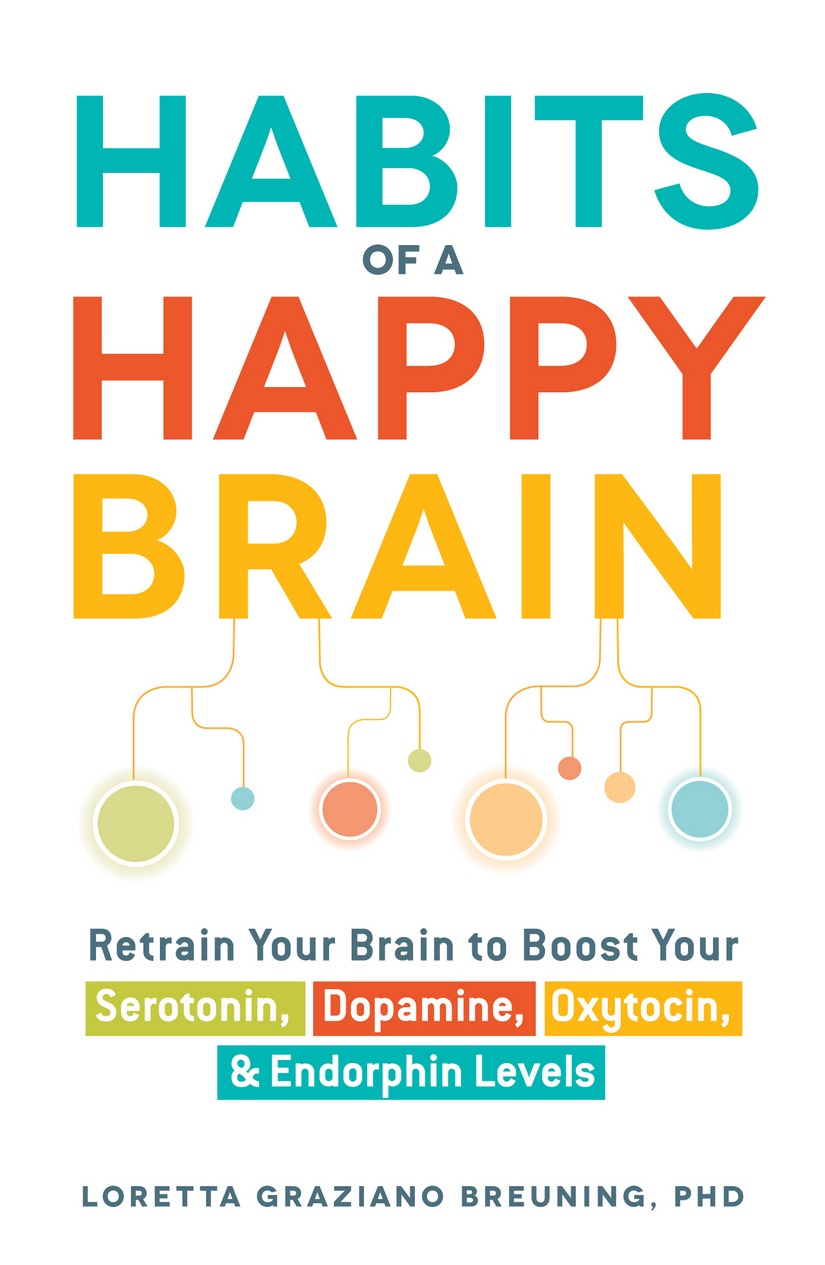
Habits of a Happy Brain
Retrain your brain to boost your serotonin, dopamine, oxytocin
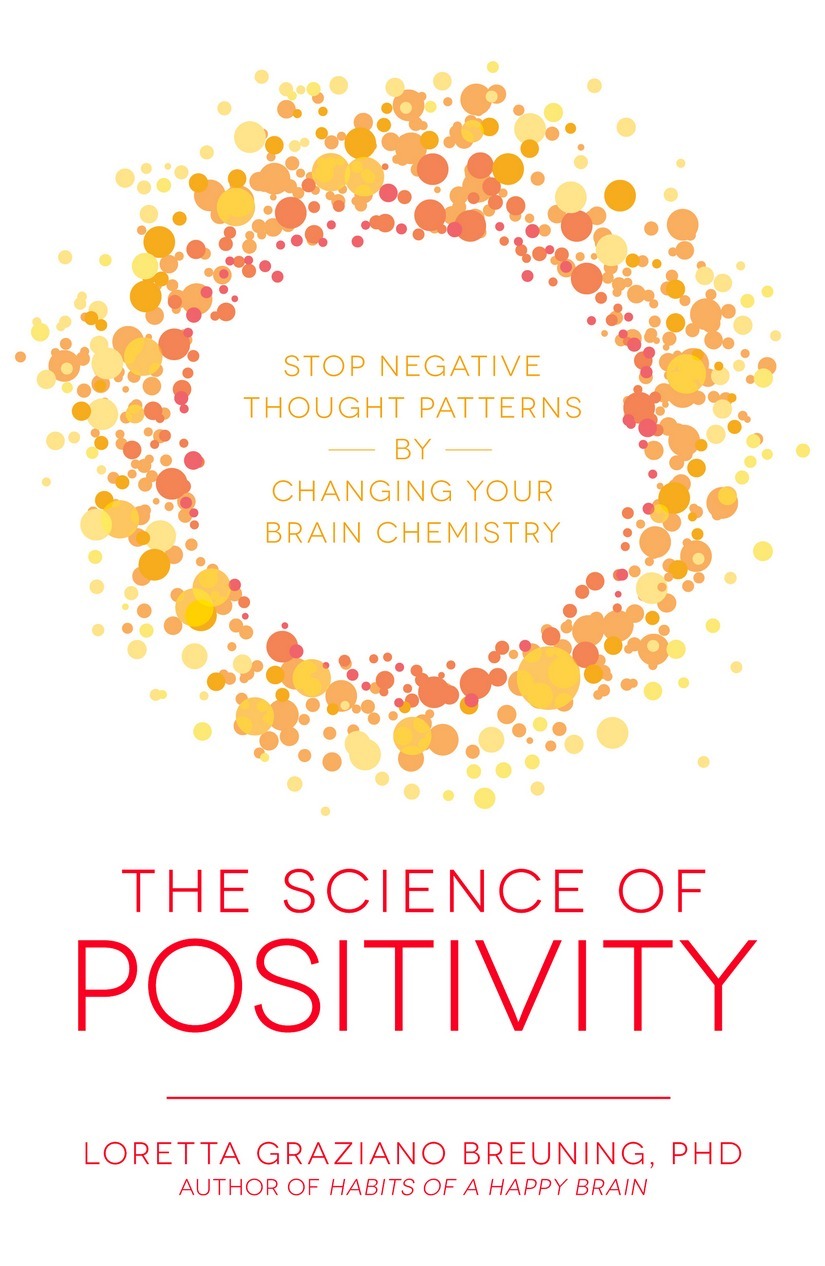
The Science of Positivity
Stop negative thought patterns by changing your brain chemistry
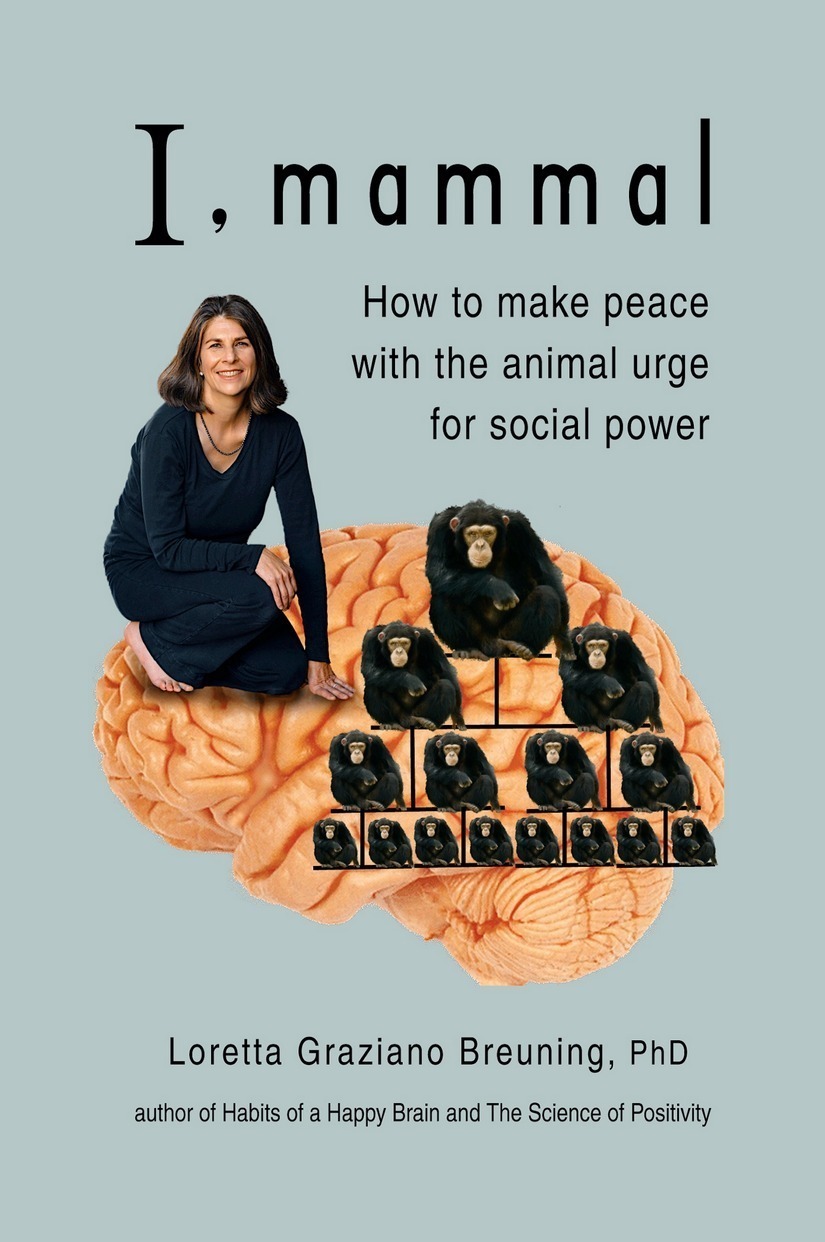
I, Mammal
How to make peace with the animal urge for social power
Excerpts from Habits of a Happy Brain: Retrain your brain to boost your serotonin, dopamine, oxytocin and endorphin levels
Imagine a child foraging with his mother. He sees her excitement when they stumble on a delicious berry patch. His mirror neurons get his dopamine flowing before he ever eats a berry. When he has his first taste, flavors rare in nature get his attention. More dopamine is triggered, which paves a pathway to the neurons active at that moment. That will help him recognize sights, sounds and smells associated with berries in the future.
Without effort or intent, dopamine builds a neural template that helps you find rewards. It also stimulates the energy you need to pursue rewards. We are not born with circuits defining the rewards that meet our needs. We build them from life experience. That’s why one person gets excited about eating crickets while another person gets excited about the Food Network. You can meet your needs by foraging for career opportunity rather than a berry patch. But you do it with the operating system that met survival needs before there was language.
You may not have a “Wow!” feeling about berries because sweetness is no longer a rare taste. Your brain saves your energy for rewards that are scarce in your life experience. I get a rush of excitement when I see the first cherries of the season. But my excitement doesn’t last. Looking at cherries can’t make me happy all the time. My brain saves its dopamine for things relevant to my present needs instead of wasting it on things already available.
Social rewards are not easily available because they can’t be mass produced like berries and sugar. Seeking and finding social rewards stimulates the excitement of dopamine. People invest years of effort trying to become a heart surgeon or a rock star because each step along the way triggers dopamine. Even if your goal is committing the perfect crime or living on the beach, your brain releases dopamine as you seek and find steps that bring you closer. The social rewards that stimulate your dopamine depend on your unique life experience. But we all live with the fact that dopamine is soon metabolized and you have to approach a reward again to get more.
Mothers have been seen lifting cars when their child is pinned underneath. Saving your child’s life is the biggest reward there is from the perspective of your genes. A huge potential reward triggers a huge surge of dopamine. A mother is not consciously thinking of her genes when she risks her life to save her child. She’s not thinking at all. Such mothers report they had no idea what they were doing. The verbal part of the brain is not needed for a dopamine circuit to unleash the energy needed for the job.

The link between dopamine and survival is not always obvious. For example, computer games stimulate dopamine, even though they don’t meet real needs. Computer games reward you with points that your mind has linked to social rewards. To get the points, you activate the seek-and-find mechanism that evolved for foraging. You keep enjoying dopamine as you keep approaching rewards. The dopamine paves a pathways that tells you to expect good feelings from computer games. The next time you feel bad, the game is one way your brain knows to relieve those bad feelings. From your mammal brain’s perspective, it relieves the threat, though the social rewards may prove more elusive.
Your ancestors never stopped seeking. When their bellies were full, they looked for new ways to meet their needs by making better arrows and stronger shelters. We know how hard they searched for the right materials because archeological sites often contain materials from far away. Dopamine made the quest feel good, but the feeling soon passed and they kept seeking more. The urge for more did not start with “our society.” Every brain learns to link effort and reward, whether material rewards, social rewards, or the relief of threat.
If you are studying for a math test, you are fueled by dopamine. You may not consciously think it feels good, but something in your life connected math to other rewards. It could be material rewards, social rewards, or just the good feeling of finding what you seek. Solving math problems is another kind of seek-and-find activity. When you find the right answer, you get that “I did it!” feeling, which erases any cortisol feelings for a moment. When your answer is wrong, you may try again because you still expect a reward.
The rewards we expect include other brain chemicals. Serotonin is stimulated when you enjoy the sense of being right. Oxytocin is stimulated if you expect a hug after doing your work. Dopamine motivates you to take the steps needed to get social rewards.
An athlete spends long hours training because a little dopamine is stimulated by each step toward expected rewards. Winning games or medals triggers a big burst of dopamine, but these are only steps as well. An athlete has linked these steps to reward that feel relevant to survival, be it material rewards, social rewards, or internal rewards.
Each brain has built expectations about survival rewards and the steps it takes to reach them. When you moved toward your expected reward, dopamine makes it feel good.
From The Science of Positivity: Stop Negative Thought Patterns By Changing Your Brain Chemistry
By the time you were eight, you had a mental model of how the world works. It wasn’t complete or perfect, but it guided you toward rewards and away from pain. To a child, something is good if it feels good and something is bad if it feels bad. This is not the best survival strategy in the modern world, so it’s a good thing we keep building our mental model of the world. Eventually we learn that good feelings can lead to bad outcomes and bad feelings can lead to good outcomes. Nevertheless, our earliest circuits rest on the simple mammalian view of good and bad. Learning from experience has its limits. You’d get run over by cars and expelled from play groups if you had to learn everything the hard way. To avoid this, adults structure the rewards and pain in a child’s environment. Hugs and praise and treats create good feelings in the short run for things that are good for the child’s long run. Bad feelings are created in the short run to help a child learn about things bad for their long-run well-being. Children build their operating system from pleasure and pain, not from conscious intent, so adults struggle to arrange the pleasure and pain in ways that are useful.
Children are highly motivated to avoid pain. Before we know the larger world, we know that a bad feeling must be relieved or it will get worse. For most dependent young children, isolation equals pain. Anything that relieves the threat of isolation is learned quickly. If a child is isolated when it grabs someone’s toy, it learns not to grab toys. Anything that turns a bad feeling into a good feeling is learned quickly by a young brain. For example, the bad feeling of hunger is relieved by saying “mamma.” The bad feeling of falling down is relieved by getting up and exploring feels good. The bad feeling of being shunned is relieved by saying “I’m sorry.”
Over time, we learn to interpret our internal sense of alarm and do something to relieve it.
Animals have less time to learn. A mouse reaches puberty in four months, and it’s a great-grandparent at age one. A gazelle runs with the herd the day after it’s born. An elephant learns to walk before its first meal because that’s how it gets to the milk. Animals learn to meet their needs fast because threats are urgent in the state of nature. The extended dependency of humans is unique in nature. It took two hundred million years of evolution to give us this seven-year chance to learn from experience instead of being born pre-wired. Early learning is the foundation of our adult responses, whether we like it or not.
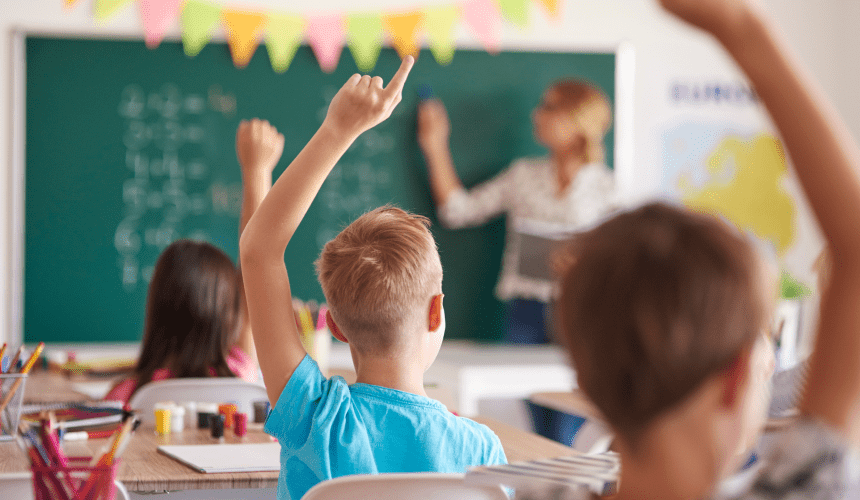
Everything can change in puberty because myelin spikes again. It’s easy to see why. Animals often leave home before they mate, and myelin helps them adapt to a new environment. Natural selection built a brain good at learning during puberty because leaving home prevents in-breeding and thus promotes survival. Conscious intent to avoid in-breeding is not required. Humans throughout history have transferred to other groups to find mates. They learned new faces, new places, new survival skills and even new languages. The neuroplasticity of adolescence made it possible. After puberty, myelin drops, and it takes a lot repetition or a huge neurochemical spike to fuse new circuits. That’s why we’re so heavily affected by our adolescent experience, despite preferences to the contrary.
Adolescent learning happens in the usual mammalian way: from rewards and pain. Social rewards and social pain trigger lots of neurochemicals, so teen experiences shape the operating system that guides our social interactions in the future. Anything relevant to reproduction gets a big response from the mammal brain. Big bursts of chemicals are triggered by the quest for mating opportunity because it’s so relevant to survival. From the pain of romantic rejection to the pleasure of social cliques, things feel urgently important in adolescence because they’re important to a mammal. Bad hair or an unrequited glance can feel like a survival threat. Big circuits build as a result.
Before you dismiss this as foolishness or an evil of civilization, read some field research on young monkeys’ quests for mating opportunity. Get your handkerchief ready because this information is quite triggering. You don’t consciously care about your genes, and monkeys don’t either. But “reproductive success ” triggers big spurts over small things because brains that did that made more copies of themselves. The brain is always learning from what works. In adolescence, what works is healthy looks, social alliances, and a willingness to take risks. You may blame “our society” for this, but those factors have been working for mammals for millions of years. Anything that enhanced your appearance or your social alliances or your risk-tolerance in adolescence triggered happy chemicals and built circuits.
Alas, anything that threatened your appearance or your social alliances or your ability to take risks was likely to trigger floods of cortisol.
Whatever relieved your threatened feelings in adolescence built superhighways in your brain. Cynicism may have worked. You may have looked at kids who had what you wanted and said, “they’re all jerks.” It felt good, which paved the way for you to see it that way again. Beneath the verbal logic of adulthood lies an operating system focused on things relevant to reproductive success. No one intends to see the world through the lens of their adolescent experience, but we build our lens with the brain we’ve inherited.
From I, Mammal: How to Make Peace with the Animal Urge for Social Power
A piglet born can be born in a litter of ten to a mother who has only eight teats. From the moment of birth, the piglet must compete for survival against its own siblings. Video clips of suckling pigs make it clear that each brain is seriously motivated to meet its own needs. They do not wait for the milk to come to them. If a piglet is slightly weaker than its siblings things quickly get worse, because all of Mamma’s teats are not created equal. The teats closer to a mother pig’s heart have a higher fat content. A piglet who falls behind will get less fat, and soon fall further behind. Mamma doesn’t intervene. Her genes are more likely to survive if some of her offspring become as strong as possible so they can make it in a world full of predators. Each piglet struggles for a better position in the food chain in order to advance its survival prospects.
To human ears, this may seem cruel and unusual. The point is not that mammals should deprive their siblings of food; the point is that the mammal brain evolved to confront real survival risks from the moment of birth. We humans want every individual to survive, no matter how weak. But beneath our urge to help others is a core drive to help ourselves. Nature is more brutal than most people realize. Most mammals die before they achieve reproductive success. When you add up all the newborns who die before puberty plus the adults who die before breeding plus the parents whose offspring all die before they reproduce, it’s clear that keeping your DNA alive is no simple feat. Success requires not only ensuring your own survival, but equipping your children to survive once you’re gone. Reproductive success rests on the survival skills of your children. Cooperation is a survival skill that mammals increasingly employed as their brains grew larger. It takes a bigger brain to anticipate the benefits of joint action. Primates have relatively large brains and they are good at calculating when to cooperate. Their long childhoods provide ample time to learn this skill. But cooperation is not learned by renouncing self-interest or the urge for dominance. Cooperating is an extra tool in the mammal brain’s pursuit of its own survival.
People often think peace is the state of nature, and the quest for status is an evil of civilization. But animal behavior makes it clear that the pursuit of dominance is the state of nature; civilization offers peaceful ways to channel the mammalian urge for dominance. Each individual compares themselves to others. You may say it’s wrong to make social comparisons. Yet your brain actively scans for the information and your neurochemicals react to what you find. Your unique experience connects your happy chemicals to the details that differentiate one person from another. For example, I do not care what people think about my nails, or about my car; but I do care about the design of my home. I cannot stand to have things in my house that clash with the color scheme. I know the world is full of people whose homes are full of color clashes while they focus on their abs or their public speaking ability. Every brain focuses on the details made relevant by their unique experience.
Contrast is the brain’s way of identifying important information quickly. Our senses pick up more detail from the world around us than we could possibly process. Survival rests on our ability to sort details quickly, and we do that by zooming in on contrasts. When I go to a cafe, I find the loud coffee grinder noise irritating. But curiously, I don’t notice my irritation until the noise stops. The sudden quiet triggers relief that makes me aware of my prior tension. Coffee grinders rev up gradually and stop suddenly, so the contrast between the noise and the silence gets my attention more than the noise itself. When we look at the world around us, contrasts get our attention. You may have heard that a frog cannot see a fly unless the fly is moving. A frog will ignore a fly sitting still right in front of it because motion is necessary to trigger its simple visual mechanism. Our senses are more complex than a frog’s, but we do need contrast to extract information from the chaos of raw detail. If you remove a picture that was hanging on a white wall, you will get information that you didn’t get from years of looking at that wall. No single spot on the wall can tell you it’s dirty, but the contrast between two spots can. We need contrast to make sense of the world we live in.
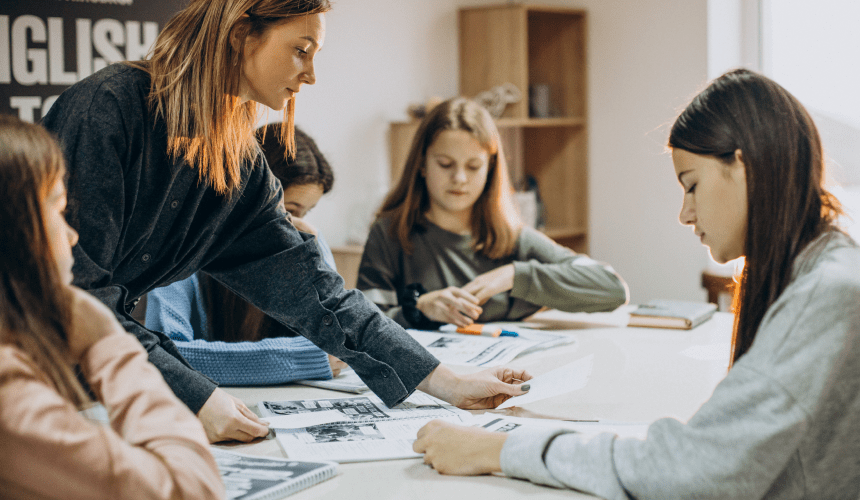
Contrasts help us make sense of the other people. Their behavior often contrasts with our expectations, and that gives us information about them. We created the information by contrasting their behavior with our expectations. A newborn baby automatically scans for contrast. When it sees a face, it is drawn to the eyes because of the contrast. Newborns do not know what eyes are for, but contrast guides their attention where it needs to go to develop communication. A newborn will stare at his mother’s eyes until his neurons have stored the pattern, and then his attention scans for new contrasts. A newborn gradually learns to expect others to meet its needs. In later life, each of us learns that others are not necessarily focused on our needs. We all encounter the contrast between our expectations of people and the reality that others are focused on their own needs rather than ours. When people disappoint us in this way, it’s hard to see the role of our own expectations. For example, if I drive down the street with the expectation that other people will get out of my way, their actual behavior might shock me. My expectations automatically suggest that other people’s driving is flawed. I “know” the social world by its contrast with my expectations, but I never really notice my expectations.
If you are lucky enough to grow up in a family that gives you a lot of attention, you may be shocked one day to find that the world is not focused on you after all. If your family made every effort to protect and promote you, the world you encounter outside your home will be painful because the rewards will never meet your expectations. On the other hand, if you grew up with little attention or support at home, life will be painful in another way. You will see other people making demands that you do not make, and often getting rewarded. You will see people benefiting from mammalian alliances that you never learned to create. There is no easy way to be a mammal. If you expect to rely on your alliances for survival, you will feel threatened when your allies stampede in the wrong direction. But if you don’t learn to trust allies, you will be at a disadvantage in a world of group-living mammals. Your brain compares your life to others. You contrast what you get to what you see others getting, and your neurochemicals respond. You don’t intend to be this way, but it’s automatic.
We mammals like the respect of our peers. Teenagers inevitably observe that some peers get more respect than others. Social hierarchies form as teens notice the respect accorded to each other individual around them. The widespread phenomenon of “popularity” in high school is astonishingly similar to the dominance hierarchies of our primate ancestors. Sociologists who studied popularity in high school found that students give remarkably consistent popularity rankings for each student at their school, including themselves. Researchers interviewed students separately, and repeated the study at several schools. Overwhelming convergence in students’ perceptions of social hierarchies was always the result. These hierarchies may be informal, but they are real.
Teenagers focus on popularity because their developing limbic systems are inherited from earlier mammals. “Our society” is usually blamed for this hierarchical behavior. But teen social status is markedly distinct from the values of our society. Teens value what mammals value: qualities relevant to success in the mating game. Teens respect peers who are attractive as mating partners, have lots of allies, and take risks with confidence. These are precisely the qualities our primate cousins value. When young people choose their personal associations, they are rarely looking for the same qualities their parents are looking for.
As a teenager, you notice that some people dominate. Some people get more attention. When you are the person getting the attention, your happy chemicals flow. Those chemicals automatically connect all neurons that are active at that moment. This prepares you to seek happy chemicals in similar situations, automatically. When a young person gets disrespected or loses status, unhappy chemicals flow. Those chemicals connect active neurons, which help a person recognize and avoid future circumstances with a similar pattern. Mammals are highly motivated to avoid unhappy chemicals. A young person will vigorously avoid situations that resemble status threats experienced in the past. In this way, without effort or intention, each individual builds an inner guide to social dominance. Expectations about respect and happiness get built because neurochemicals stimulate connections between neurons. Each person builds a unique set of expectations, but they overlap in important ways because we all build them by interacting with other mammals.
We all notice that certain choices get us respect and that it feels good. Alas, teens learn that it is not easy to get happy chemicals from the brain. They build strategies for triggering more happy chemicals and avoiding unhappy chemicals. Their strategies tend to focus on the present because future happiness is just an abstraction of the cortex. A young brain only focuses on the future when it stimulates happy chemicals today or avoids unhappy chemicals today. High school popularity is a touchy subject for good reason. In adolescence we realize that our parents cannot give us happy chemicals or protect us from unhappy chemicals. If you want the attention of a special someone, your parents cannot get it for you. You have to do what it takes to get it yourself. Every mammal has to eventually learn to meet its own needs. A species only survives if its children learn to survive once their parents are gone. Each mammal must learn to meet its own social needs as well as its physical needs. A young mammal must learn what it takes to attract mates in order for a species to reproduce itself.
Every primate eventually has to deal with the adult social hierarchy without the shelter of its parents. When you are the one facing a social hierarchy on your own, it’s unnerving, even though every primate goes through it. Our teen years bring the awareness that we are constantly being judged by our peers, and that we have to manage this aspect of life for ourselves. Each brain constructs a model of how to interact with people outside the family. Each mind learns what it can about how to gain status. Frustration is inevitable as we see others getting recognition and learn that we cannot always dominate. This dilemma is universal, but we feel the frustration individually. Each time a young person is happy, their brain stores the experience as a guide to finding future happiness. Each time they are sad, their brain extracts lessons about what not to do. Without conscious effort, the adolescent brain builds a mental model of social dominance. Experiences relevant to a teenager are the raw material of this model. Where to sit at lunch and what to say in class may not seem relevant to later life, but the brain automatically extracts the patterns.